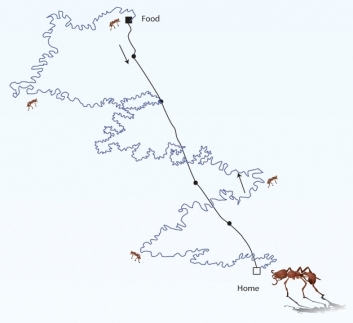The biologist, Nigel Franks, wrote, “the solitary ant is behaviorally one of the least sophisticated animals imaginable…if 100 army ants are placed on a flat surface, they will walk around in ever decreasing circles until they die of exhaustion…yet put half a million of them together, and the group as a whole becomes what some have called a “superorganism” with “collective intelligence.” These complex adaptive systems range in scale and scope from biological organisms such as a colony o f ants, brains, and human beings, to biological and non-biological ecosystems such as companies, economies, the world wide web, and cities. Interestingly and shockingly, such varied phenomenon have much in common in terms of structure and dynamics. The generalized components that define these systems include a network of nested hierarchies that exhibit emergent, self-organizing, adaptive, goal-seeking, self-preserving, and evolutionary behavior. A single ant does not have any sense of the big picture to which it is contributing, however, a colony of ants can perform seemingly miraculous feats such as assembling themselves into bridges and rafts for crossing waterways during foraging expeditions and inferring a direct and efficient path back to the nest.
f ants, brains, and human beings, to biological and non-biological ecosystems such as companies, economies, the world wide web, and cities. Interestingly and shockingly, such varied phenomenon have much in common in terms of structure and dynamics. The generalized components that define these systems include a network of nested hierarchies that exhibit emergent, self-organizing, adaptive, goal-seeking, self-preserving, and evolutionary behavior. A single ant does not have any sense of the big picture to which it is contributing, however, a colony of ants can perform seemingly miraculous feats such as assembling themselves into bridges and rafts for crossing waterways during foraging expeditions and inferring a direct and efficient path back to the nest.
All complex adaptive systems consist of large networks of individual components (i.e. cells, organs, organisms, ecosystem). These terminal units when aggregated, take on collective characteristics that are different from the properties of the individual components themselves. The aggregate is not only larger in quantity but radically different in terms of quality. Your mind is more than the sum of its neurons. Furthermore, each lower level system is embedded in a larger order system in the form of nested hierarchies. For example, a group of cells organizes to form an organ, a group of organs form an organism, a group of organisms form a species, and a group of species from an ecosystem. None of the ~ 100 trillion cells in our bodies have any consciousness or knowledge that they are a part of us. Each system has its own properties and follows its own local rules of behavior and interaction in an autonomous or semi-autonomous manner. They utilize information from both their internal and external environments and communicate that information to other systems in the hierarchy. For example, the heart increases its rate when you experience pain or are in fear. The skin senses the pain, sends a signal to the brain (or spinal cord) via electrical impulses, which then transmits a signal to the adrenal gland to release adrenaline which interacts with receptors in the heart informing it to speed up. The human body utilizes messages in the form of hormones or electrical impulses to transmit information. This results in an intricately complex web of positive and negative feedback loops. In general, negative feedback loops serve to stabilize and return the system back to a state of dynamic equilibrium, whereas positive feedback loops enhance whatever direction of change is imposed on it. Feedback loops not only facilitate a state of dynamic equilibrium but also play a role in enabling systems to adapt and change their behavior in response to changing external conditions. Organisms adapt and learn in all time scales, from the evolutionary over the course of hundreds of thousands of years to minute by minute changes through autonomous and reflexive homeostatic feedback mechanisms such as temperature regulation.
In my essay, Quality Detector, I wrote about the complexities of the healthcare system and the hazards of reducing complex phenomenon into overly simplified metrics. The hazards come about partly because the human body is a complex adaptive system with interdependent nested hierarchies with web-like feedback loops and adaptive behavior in time scales ranging from the evolutionary to the immediate. Naively breaking down the system into independently acting component parts or implementing changes in one part of the system can have unpredictable consequences elsewhere in the system. Nevertheless, medicine has been successfully built on reductionism and interventionism. In fact, over the last century, we have made tremendous gains in life expectancy and infant mortality. However, these gains seem to be stagnating, and furthermore, dangers such as antibiotic resistance, pandemic infections, dementia, drug addiction, and metabolic syndrome continue to lurk. Incorporating a top-down complex adaptive system framework to augment the bottom-up reductionism might improve our models of healthcare and yield improved predictions and outcomes. Donella Meadows stated, “the idea of making a complex system do just what you want it to do can be achieved only temporarily, at best…for any objective other than the most trivial, we can’t optimize…we can’t impose our will on a system…we can listen to what the system tells us, and discover how its properties and our values can work together to bring forth something much better than could ever be produced by our will alone.”